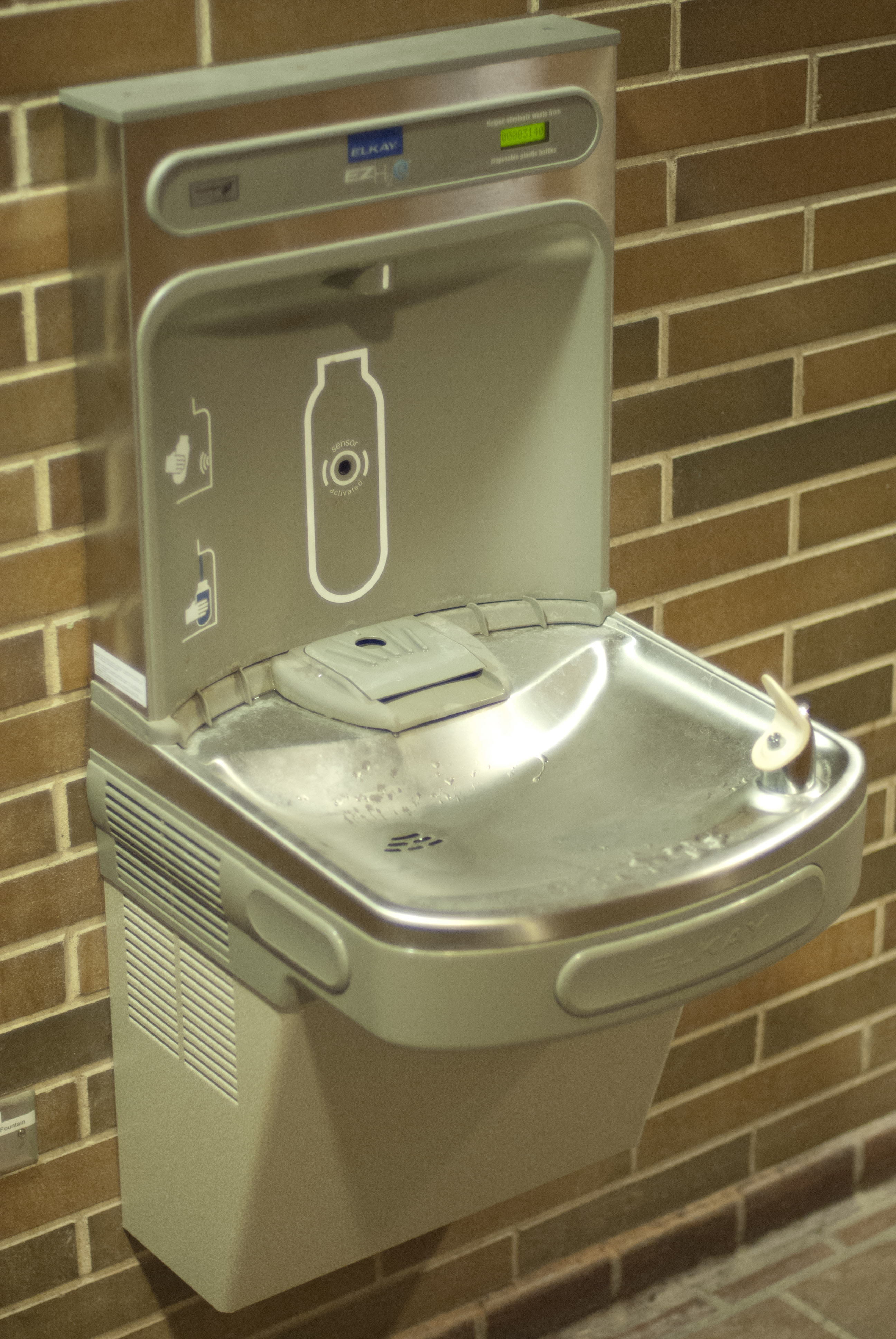Students at the University of Manitoba have helped save over 11,000 plastic water bottles from the landfill.
In January, the U of M installed a series of new water fountains in University Centre, equipped with water bottle re-fill ports that activate via motion sensor.
The EZH2O bottle filling stations are one of several waste-conscious sustainable development projects on campus. Above each fountain a digital display offers a running tally of how many disposable plastic water bottles have been “saved” to date.
According to five of these displays as of Friday, March 30, 2012, over 11,500 single-use plastic water bottles have already been saved from the landfill.
The water fountains encourage people on campus to use refillable containers instead of buying plastic water bottles.
When opting to fill-up at one of the stations, users witness the digital figure increase by one.
“We are hoping that the implementation of these fill stations will encourage students to think critically about their plastic bottle waste,” said UMSU president Camilla Tapp in an email to the Manitoban.
“It promotes the elimination of bottled water because it decreases the barriers to access safe drinking water,” Tapp added.
“It also eliminates the large quantities of waste produced by plastic disposable water bottles. This is definitely a small step in the larger sustainability initiative that is underway at the University of Manitoba, and across the country,” Tapp said.
In 2009 the University of Winnipeg became the first university in Canada to ban the sale of plastic water bottles on campus.
According to Tapp, “[the U of M is] the last large institution to go bottled water free in the province.”
“Just last summer, the Manitoba Government went water bottle free, and we feel that . . . other leaders in the province are making the right choice and recognizing the value and quality of our local water sources, [and] we hope the U of M will choose to follow suit in the near future.”
Tapp mentioned the university plans to install the same model of fountain in all subsequent construction projects on campus.
Tapp also said the previous water fountains looked dirty and students did not want to use them.
“The actual implementation of [the new fountains] is working because I fill up my water bottle a lot now,” said Julie George, a U of M student.
“I like the new change: it’s cleaner, [with the new] design it’s easier to fill up your bottle, and the nozzles are new, not gross and green,” added George.



Any idea when the rest of campus will have these fixtures installed?